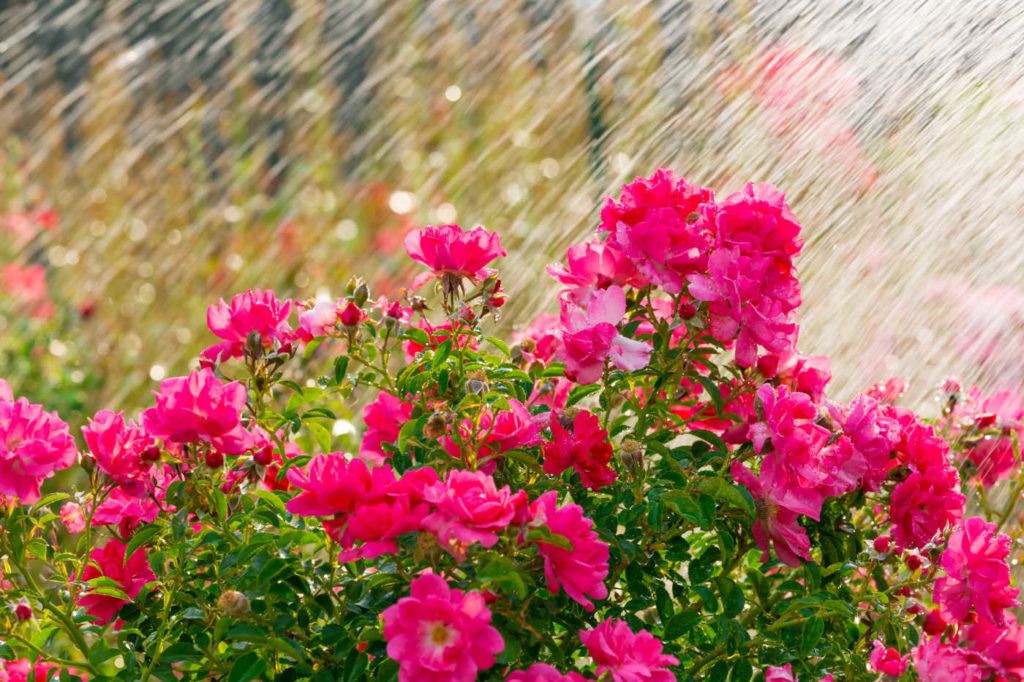
The Fine Art of Watering
After counseling another business owner about watering, warrantees and similar teachable moments in the challenges of watering, it occurs to me that this might be a good thing to talk about during our hottest season.
So, take a minute with a cool drink and let’s talk about cool drinks for plants. Because even if you’re an expert, there’s always time for a refresher. And if you’re fairly new to the art, just know that I STILL get it wrong all the time after more than 30 years as a horticulturist in this business.
My job as The Personal Garden Coach often requires me to represent the kingdom known as “The Emerald City” and wear the plastic sparkly tiara that has a little label on the inside that reads: “Mother of #PotsofBold,” “Bringer of Fluff,” “Destroyer of Bad Plant Placement Ideas,” “Avenger of Poor Pruning Practices” and “Counselor to Marriages Shattered by DIY Ideas.”
I need to be skilled at being able to give both good and bad news to clients all the time — and often at the same time. Good watering practices are frequently at the heart of a fair number of those challenging conversations no matter the time of year, but seem to be most difficult in late summer.
Let’s look at a few of the biggest sticking points that seem to come up over and over and see if we can shed some light — or shade — on the situation. Depending on where you are in the country, both might be a good thing!
Watering with Precision
There is a deep well of old, outdated or plainly ill- advised information about watering tips, tricks and techniques that usually sprout from something like “Pinstagram” or Facebook groups. Helping to correct bad information disguised as GREAT information is one of my passions.
For example, believing that adding hydrogels to your potting soil is going to be the second coming of Atlantis in a garden that’s 95°F and dry as the Sonoran Desert is going to bring that homeowner false hope. Not that it can’t be helpful when used properly; it’s just not something an inexperienced gardener should rely upon. Because, just between you and me, you know that person is going to think, “If a little of these teeny tiny little crystals is good, then obviously a lot is better,” and they will explode the plants right out of that soil after the first watering or spring rain!
In a garden center, watering protocols are a little bit different than at home; they require nearly military precision and consistency when done professionally. I’m a firm believer that, like teachers and first responders, the person or people who hold the hose ought to be revered and respected for the pressure they are under to do it correctly, thoroughly and consistently.
Who has not seen a manager go through the perennials like a hound sniffing out a bad guy, only to find the one plant on the entire table that didn’t get watered after the watering person swore on their grandmother’s grave that they not only watered, but double- and triple-checked to make sure that not one single plant was missed.
BOOM! Insert hose drop here. Busted! There will always be that one plant, in the middle of the table or flat, that gets missed. Trust me, it happens. There will always be that one shrub or one tree that gets missed by even the best waterers.
So, with all of our earnest intent to water correctly and to the best of our ability, with a hose duct taped to the end of someone’s arm for the entire summer, imagine how our customers feel.
We joke all the time about that one customer who swears on the American Horticultural Society bible that they definitely, without a doubt, watered that hanging fuchsia basket every day. “There’s no way I could have let that die from lack of water. See? It’s wet right now.” (Because they watered it before putting it in the car.)
And now there’s the sad, lifeless fuchsia carcass that sits on your counter for all the other customers to see while a refund is being demanded.
Finding a Solution
“Let’s figure this out together so this doesn’t happen again, does that sound fair?”
Asking questions can help defer any blame games and get the customer thinking about how this could have happened — and possibly enlighten a management decision maker on what was missed with proper information that could have prevented this scene.
When selling water-needy or plants with unusual water needs, such as Tillandsia, do you have a handout that outlines proper location and watering requirements? If not, this might be a great time to start. Make it a standard that you give this handout with every purchase, gift or otherwise. It should address the optimal location for a fuchsia and explicitly explain how to properly water.
My guess in the above rundown is that the customer DID water it daily; however, the basket was hung facing south or west and simply cooked to death. No amount of water will fix wrong plant, wrong place. On the other hand, if it was facing north or east, maybe proper watering technique wasn’t discussed, and they were only throwing a quart of water on it when a gallon was needed.
Lastly, was the phrase “surface tension” mentioned either in the handout or in person — and why it’s important? If the surface tension of the soil is not softened with an initial short amount of water, then when it is fully watered deeply a little bit later, water will run down the sides of the pots and the soil will not be imparted back into the interior root structure and soil no way, no how. This is normally when we’re in emergency mode — when we get that phone call about the hanging basket that just won’t accept water at all and we’re saying, “Hurry, dunk that basket in a bucket until the bubbles stop and then say a prayer and do a little dance under the full moon at midnight in the nude because it might just be too late to save it!”
Another common scenario that is often at the heart of the difficult post-mortem watering conversation is the shade plant that got placed in too much sun, too close to the home’s dripline, with no watering system, in mulch that’s too deep. Trust me, I can hear your sigh from here.
This is maddeningly common. I’ve had to “fix” this damage done by licensed architects, so a homeowner is for sure going to be a victim of this problem too. “But the tag says right here, FULL SUN!” Yes, ma’am, you’re correct this tag surely does say full sun, but it doesn’t say in Phoenix! I am often reminding clients that tag information is a bit like taking advice from the Google machine; a little Googling can be a lot dangerous at times, and taking tag information made for an entire continent at face value can be tricky at best.
Are you explaining, or do you have a chart where customers can see specifically what the definitions of full sun — all the way through the gradations to full shade — actually mean? After writing two books, we finally had to include a specific paragraph to make certain we addressed it accurately. Having this conversation with employees over and over is a wonderful way to ensure that this sinks in and, when done well, it is one of the best selling tools ever!
The last typical watering storyline is that of the hedgerow. Let’s use arborvitae as an example, though most any hedge will do. Arborvitae can be incredibly sensitive plants, even under the most ideal circumstances. Inevitably, there will always be a few people every season in the garden center who will call about the one out of 10 (the average death rate that I’ve noted over the years) where the customer call goes something like this: “I bought 20 6-foot-tall arborvitae from you last spring and one of them is looking a little strange now (in August). I’ve been watering, but I’m worried it’s going to die. What should I do?”
I’m not going to get into the whole warranty discussion in this article; that’s another topic for a cooler day. But let’s just dissect the variety of issues that could help everyone learn where this went right and wrong.
For the purpose of discussion, let’s assume that you didn’t give them a planting handout. And maybe because it was spring madness, the salesperson didn’t address what an arborvitae looks like when it’s about to die from over- or underwatering. They both look nearly identical! So, how is a new gardener supposed to know that and, since it’s a sensitive plant anyway, did anyone address whether it was the highest and best use of this plant to suit the customer’s needs?
There might have been an even tougher option. Aside from that, proper depth of the rootball is critical, proper use of driplines and/or sprinklers, making sure there’s no “naked soil syndrome” brought about by a lack of mulch and, most important, the actual length of time spent watering based on the type of soil that could cause rot, any slope that could cause them to dry too quickly and even moles or voles.
You can see why customers would get so discouraged and confused by the numerous poor tips, tricks and techniques.
This article is just the springboard to get you to think about those important training conversations to give the highest quality information for both employees and customers alike. Go forth and conquer your own kingdoms — I’m busy watering mine.


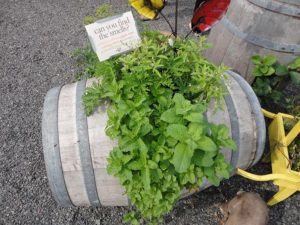
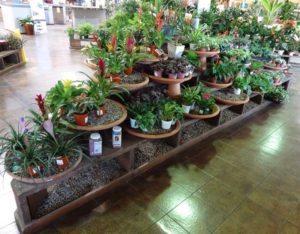
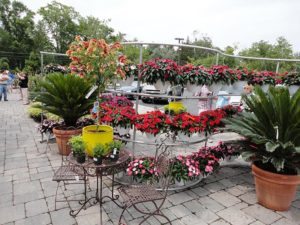



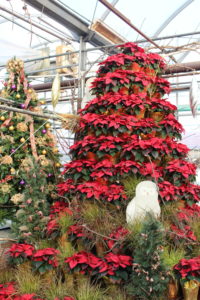





 Videos
Videos





